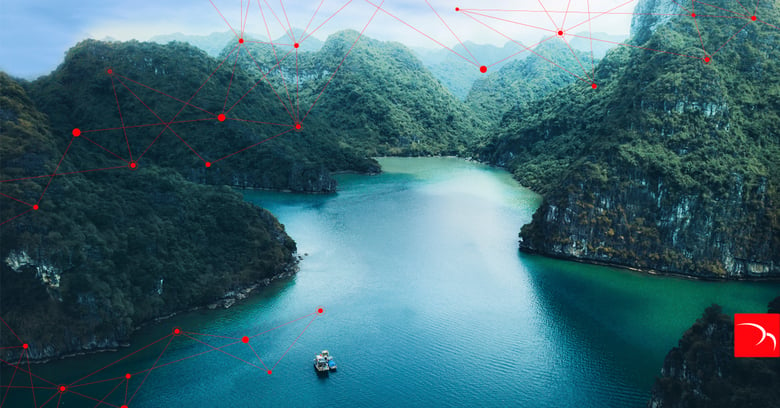100 km from the mainland, Ceragon bridges the digital divide with fast, reliable wireless transport for backbone and last mile.
A global Tier 1 operator serving Asia, Africa, and the Americas was looking to bridge the digital divide and strengthen its transport network in one of its key markets in Southeast Asia.
The operator was looking for a means to reliably and cost effectively extend coverage of its network to remote islands located more than 100 kilometers offshore.
In evaluating alternatives, the operator considered submarine cable but found the solution not only far more time consuming but also significantly less economical.
The operator concluded that Ceragon’s all-outdoor wireless transport solutions are the ideal choice to provide connectivity services to the islands.
The Challenges:
- Bridge the digital divide for remote islands enabling business growth
- Deliver rapid rollout expediting time to market
- Increase existing network capacity and reliability
- Reduce CAPEX and OPEX
Providing high-speed low latency connectivity for island communities isolated from the mainland by vast bodies of water can be a significant challenge. Addressing that challenge while attempting to lower overall per link OPEX adds another level of complexity. Laying more than 100km of subsea fiber is cost prohibitive. The tier 1 operator needed to find a fiber alternative that would provide the same network capacity and reliability without the enormous cost and complexity. Ceragon’s wireless microwave and millimeter wave technology can be deployed quickly and easily making it an ideal option.
The unique multi-island to mainland network required wireless backbone and last mile links. In addition, energy efficiency was a critical consideration for reliability and operating cost reduction. A low energy consumption solution was needed to accommodate potential power outages caused by the remote nature of the islands and their exposure to extreme weather and environmental conditions. When the main power supply is temporarily unavailable, solar and gas generator backups come online. The more energy efficient the network is, the longer the available backup options can sustain network operation creating a ‘gigabits-to-the-gallon’ calculous.
The Solution:
- Ceragon’s high-capacity low latency backbone
- Ultra-high-power all-outdoor compact multi-core node radios
- Connectivity for 100 km+ offshore group of islands bridging the digital divide
- Access to new customer base
The network expansion and upgrades Ceragon provided for the tier 1 operator utilize a custom combination of extremely high powered RFU-D-HP radios for the long haul backbone, IP-20N aggregation nodes in high configuration links, and IP-20C all-outdoor units, enabling fast, easy, and affordable deployment. The wireless transport solution delivers high capacity, low latency connectivity throughout the multi-island network. IP-20C’s compact footprint saves valuable space at each link site and reduces energy consumption by up to 40%.
The operator now has access to a new customer base that had previously been beyond the reach of their legacy network. The new customers represent a significant opportunity for business growth as well as an important advancement toward the goal of bridging the digital divide in Southeast Asia. Existing customers will benefit from increased capacity and reliability resulting in lower churn, reduced OPEX, and higher quality of service.


